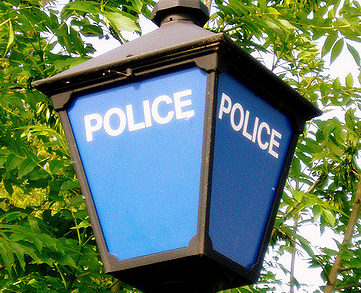29 November 2018
Police vs. Policy
Keep the blue lamp burning.
By Jack Wippell
 Last Friday, Scotland Yard announced a range of new tactics that were introduced last year and were designed to combat the rise in moped crime. These include, amongst other ideas, ramming suspects to knock them off their bikes, even if they are not wearing a helmet.
Last Friday, Scotland Yard announced a range of new tactics that were introduced last year and were designed to combat the rise in moped crime. These include, amongst other ideas, ramming suspects to knock them off their bikes, even if they are not wearing a helmet.
There has been concern raised on all sides. Some claim that these tactics risk hurting both robbers,who often do not wear helmets, and the public. That is a weak argument given that the conditions for ramming into the scooters are satisfied only when there appears to be a significant risk that the motorcyclist could go on to harm pedestrians, and the robbers themselves have brought any risk upon themselves by choosing to commit the crime in the first place. The failure of some thieves to wear helmets is not so much a matter of fashion as of evasion. The removal of helmets has been a tactic of muggers who believe that police then have to stop chasing them. This is no longer the case. Perhaps the threat that police may ram them will be enough to discourage this dangerous tactic, and even foster better road safety amongst premeditative criminals.
These new tactics seem to be working. Whilst the Metropolitan Police recorded 22,025 crimes enabled by scooters and motorcycles from June 2017 to May 2018, 50% more than the same period in 2016/17, this masks a recent falling trend month-by-month in 2018. The downward trend directly followed the implementation of these new tactics.
However, there are problems in enforcing these methods; as Earl Warren remarked, “the police must obey the law while enforcing the law”. And the Police Federation has come out saying that “whilst this tactic may be needed…those using it are still breaking the law”. Police officers are judged against the common standard, and driving directly at another vehicle is an act which qualifies as ‘dangerous driving’ and, hence, leaves officers liable to prosecution. So, we have the odd dichotomy of new successful tactics, which limit both robberies and pedestrian collateral, being also possible criminal offences. New legislation is needed to protect police from these offences and some is under discussion. Let us hope it passes the Commons test. For now, however, the police are using techniques which expose them to the law.
This paradox is not unique. In a country gripped by a rise in knife crime (standing at the highest level in seven years), Sajid Javid has quietly dropped plans for a ban on high powered, military-grade rifles in the “long-awaited” Offensive Weapons Bill, moving directly against the recommendations of the police force to tighten up on gun control. This move comes in an attempt to stifle rebellions from Tory backbenchers and the DUP, who are the main parliamentary opposition to the Bill. Indeed, this move seems part of a trend of appeasement-rather-than-reason-based policies to unite the party over the turbulent world of Brexit. These rifles can, according to the Independent, “immobilise a truck from more than a mile away” and whilst none of these rifles has ever been actually used in theft or murder, the only related crime being a robbery of the gun itself, that does not mean they never will be. However, what is most worrying, and the really key point to draw from all of this, is that whether the final conclusion be for or against a ban, any decision should surely be motivated by reasoned argument over the dangers of the weapons and not used as a vote winning mechanism for the Commons in a separate debate. To redirect a book title of Christopher Hitchens, it really does seem that “[Brexit] poisons everything”.
In other news, it appears that the London Mayor currently plans to spend £1.7 million on 100 water fountains instead of on the police force (which is at its lowest numbers since 2003). £1.7 million may seem an awful lot for 100 water fountains, when a quick browse over companies online puts the price of an outdoor unit at anywhere between $1,000 to $3000, but the real concern is the diversion of money. In London there are around 30,000 police for 8.5 million people, the lowest level per head in 20 years. Combine that with the fact that there has been a recent rise in violent crimes as well as a rise of report rates for crimes in general, both consumers of police time, and there seems to be a pretty good case for more funding.
Something needs to change. It is difficult to accomplish much when understaffed, even more so if the public sentiment seems to be moving against your recommendations and enforcement tactics. The police play a necessary role in any functioning society, a role which the Government need remember. It would be hard to enjoy the glorious land that is Brexit if we have to rely on hiding behind water fountains when a knife-wielding criminal surfaces instead of being able to reach out to the police.


